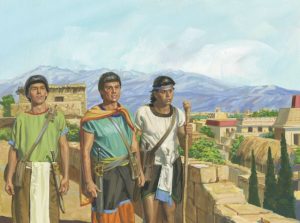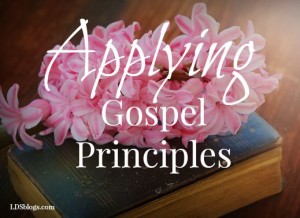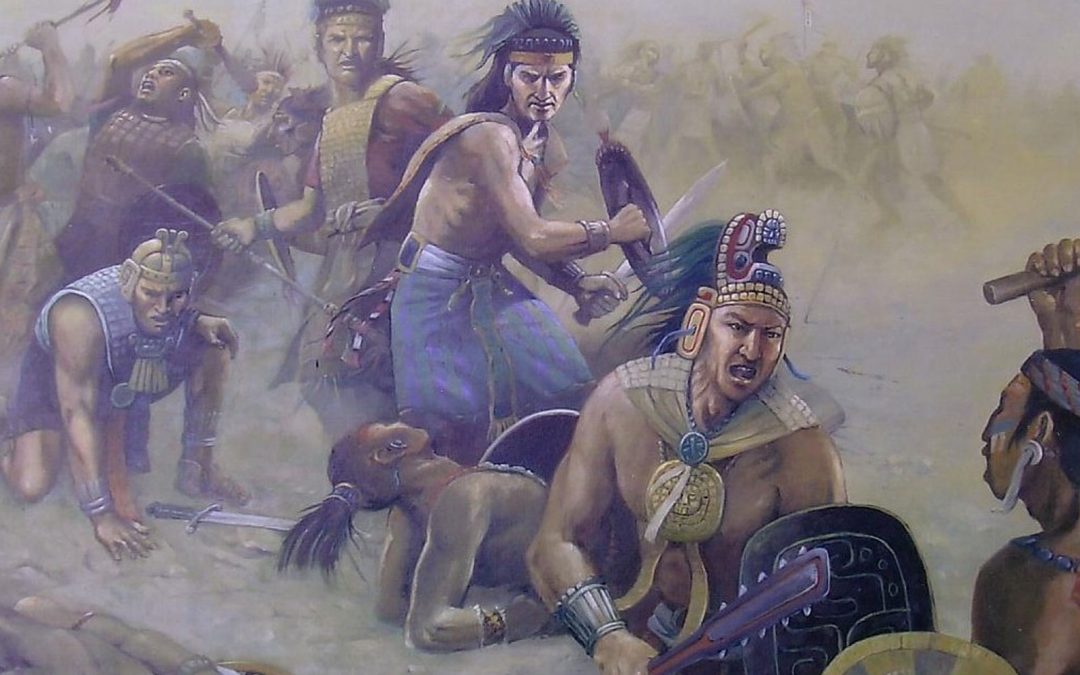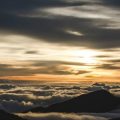I’m fascinated by the strong antagonists of the Book of Mormon. The sons of Mosiah encounter one apostate faction of them in Alma 21. The Lord directed Aaron, the could-have-been-king of the Nephites, to the Lamanite city of Jerusalem. At Jerusalem, he met Lamanites he left his kingdom to teach as well as some apostate Nephites. This group of Nephites consisted of Amalekites and Amulonites.
The Amulonites

Aaron and His Brethren Released by Jerry Thompson
The Amulonites descended from Amulon, former priest of King Noah. He and other priests fled with King Noah during a Lamanite attack. They left their wives and children behind in their mad dash out of town. Before they fled, the Lord sent Abinadi to remind them of the doctrine they said they lived and taught. Out of this group, only Alma repented.
The truant priests stole Lamanite daughters and married them. They lived among the Lamanites and taught the Lamanites language and marketing skills. And when it was introduced to them, they adopted the theology of Nehor.
The Amalekites
Similarly, the Amalekites left what they felt were confines of Nephite theology and culture and moved to the Lamanite’s territory. While shedding the oaths and covenants of the Nephites, they still asserted that God existed. This remark by the king over all the land is so interesting.
And Aaron said unto him: Believest thou that there is a God? And the king said: I know that the Amalekites say that there is a God, and I have granted unto them that they should build sanctuaries, that they may assemble themselves together to worship him. And if now thou sayest there is a God, behold I will .
They still believed in a God. They built churches and worshipped there. Their belief system was so strong that they apparently requested religious exemption to build churches from the king of all the land. And yet, Mormon described the Amalekites as “a more wicked and murderous disposition than the Lamanites were, in and of themselves.” The Amalekites also converted to Nehor’s teachings.
So two former sets of “believers” experienced apostasy and converted to the same counterfeit theology, the order of the Nehors.
And [Nehor] had gone about among the people, preaching to them that which he to be the word of God, bearing down the church; declaring unto the people that every priest and teacher ought to become ; and they ought to labor with their hands, but that they ought to be supported by the people.
And he also testified unto the people that mankind should be saved at the last day, and that they not fear nor tremble, but that they might lift up their heads and rejoice; for the Lord had all men, and had also men; and, in the end, all men should have eternal life.
Despite Nehor’s philosophical retractions, few people renounced their belief in his religion.
How does this happen, this careful, baby step, devolution to partial and non-truth?
Apostate Progression
58 years after the publication of his book, Spencer W. Kimball’s explanation reveals a progression of adopting modified truths that still rings true.

To read more of Delisa’s articles, click here.
“Apostasy often begins with criticism of current leaders. Apostasy usually begins with question and doubt and criticism. It is a retrograding and devolutionary process. The seeds of doubt are planted by unscrupulous or misguided people, and seldom directed against the doctrine at first, but more often against the leaders.
They who garnish the sepulchres of the dead prophets begin now by stoning the living ones. They return to the pronouncements of the dead leaders and interpret them to be incompatible with present programs. They convince themselves that there are discrepancies between the practices of the deceased and the leaders of the present. They allege love for the gospel and the Church but charge that leaders are a little ‘off the beam!’
Soon they claim that the leaders are making changes and not following the original programs. Next they say that while the gospel and the Church are divine, the leaders are fallen.
Up to this time it may be a passive thing, but now it becomes an active resistance, and frequently the blooming apostate begins to air his views and to crusade. He is likely now to join groups who are slipping away. He may become a student of the Journal of Discourses and is flattered by the evil one that he knows more about the scriptures and doctrines than the Church leaders who, he says, are now persecuting him. He generally wants all the blessings of the Church: membership, its priesthood, its temple privileges, and expects them from the leaders of the Church, though at the same time claiming that those same leaders have departed from the path.
He now begins to expect persecution and adopts a martyr complex, and when finally excommunication comes he associates himself with other apostates to develop and strengthen cults. At this stage he is likely to claim revelation for himself, revelations from the Lord directing him in his interpretations and his actions. These manifestations are superior to anything from living leaders, he claims. He is now becoming quite independent.
History repeats itself. As the critics of the Redeemer still worshiped Abraham and the critics of Joseph Smith could see only the Savior and his apostles, and as the apostates of Brigham’s day could see only the martyred Joseph, now there are those who quote only the dead leaders of the pioneer era” (Spencer W. Kimball, The Teachings of Spencer W. Kimball, p. 462.)
The Book of Mormon shows real-life examples—from Laman and Lemuel to the Nephites of Mormon’s day and the Amulonites, Amakelites, and others in between— of people who escape truth as they grow in pride, begin to murmur, rise in opposition, and eventually, live in open rebellion against the truths they once knew.
About Delisa Hargrove
I am a member of The Church of Jesus Christ of Latter-day Saints. I have moved 64 times and have not tired of experiencing this beautiful earth! I love the people, languages, histories/anthropologies, & especially religious cultures of the world. My life long passion is the study & searching out of religious symbolism, specifically related to ancient & modern temples. My husband Anthony and I love our bulldog Stig, adventures, traveling, movies, motorcycling, and time with friends and family.







Delisa…. wow just a few minutes before I read your blog I was trying to have some family members understand that the post about Brigham Young being a racist where they quoted Journal of Discourses Book 10 page110 out of context. I shared with them the Statement The Church has added to the introduction that the Journal of Discourses is not what the Church Doctrine Is. I shared the paragraph just above on page 110 where Brigham speaks of his distaste for slavery as well as Abolitionist. That all men are created equal. Then I asked them to also read on the web ChurchOfJesusChrist.org on Race and Slavery the Chuches admission of mistakes by early members in the 1800’s. Who followed social thought of the time regarding Blacks being cursed. Boy I felt I was a missionary in enemy territory but couldn’t stand by any longer keeping quiet.
May God magnify your efforts!!!
Totally loved your blog today! It is a testimony of why they did the Book of Mormon this year. It always seems to have parallels to the here and now happening in the world. Even more do we need to have the remembrance of who to look to and what we can do to follow Christ. Thx for always sharing thoughts and resources.
Thanks for reading! I feel like the Book of Mormon has been applying more and more, too. I’m so grateful for ancient and living prophets who give examples and antedotes against following down the wrong paths!